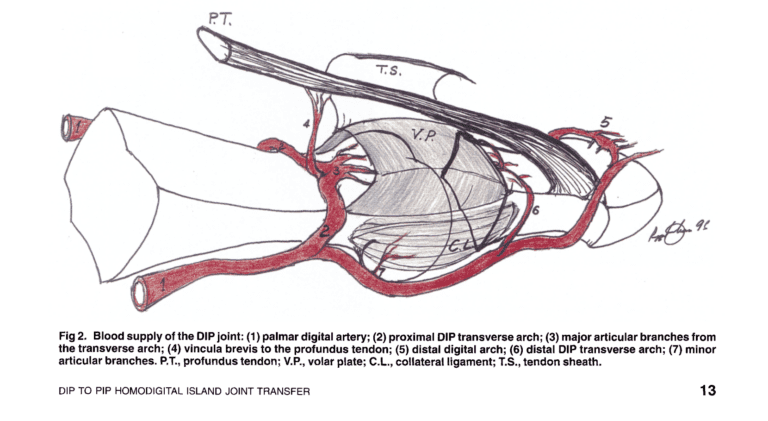Article in Operative Techniques in Plastic and Reconstructive Surgery · February 1997
Reconstruction of the damaged proximal interphalangeal (PIP) joint is a challenge in the young active patient. Arthrodesis is disabling and implant arthoplasty is not satisfactory. Microvascular transfer of the second toe PIP joint is technically demanding, requires sacrifice of the toe, and achieves only 40° of average arc of motion in most reported series. The distal interphalangeal (DIP) joint of the same digit is conveniently located for potential transfer and its loss is well tolerated. We hereby describe our technique of homodigital DIP to PIP joint island flap transfer. With this procedure, the traumatized digit serves as its own donor and no other digit or toe is compromised. It exchanges the DIP joint, which contributes only 15% to the digital flexion arc for the PIP joint whose functional contribution is 85%. In addition, it provides the opportunity to shorten the stiff finger, making it less prone to interfere with hand activities. It is currently our preferred procedure, and because of its excellent result, has superseded the microvascular toe joint transfer.
KEY WORDS: arthroplasty, vascularized grafts, finger joints, island flaps, microsurgery, finger movements


Cite this article: Khouri, Roger & Shin, Young-Jin & Badia, Alejandro & Orbay, Jorge. (1997). Distal interphalangeal joint to proximal interphalangeal joint homodigital island transfer. Operative Techniques in Plastic and Reconstructive Surgery. 4. 12-16. 10.1016/S1071-0949(97)80013-3.

Monday- Friday: 8:30AM- 5:00 PM
Saturday- Sunday: Closed